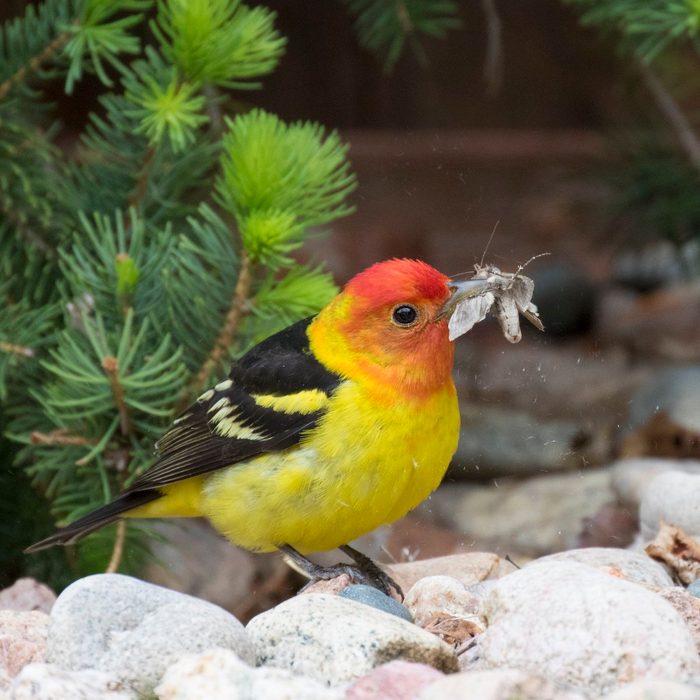
Do Birds Eat Butterflies?
Many insect eating birds like orioles, grosbeaks, blue jays and other fliers will occasionally go after caterpillars, whose bodies are nutritious. But adult butterflies’ size make them difficult for small birds to catch.
Desiree L. Narango, a postdoctoral researcher at the University of Massachusetts, Amherst, says, “For the most part, moths are more abundant and palatable than butterflies.”
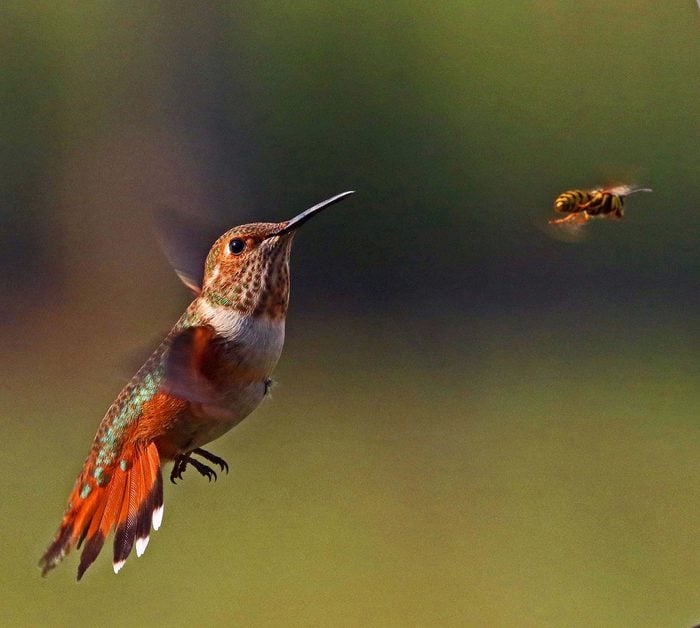
Do Birds Eat Bees?
Insect eating birds that eat bees only do it occasionally. “In general, bees are not highly preferred insects,” Desiree says.
Eastern kingbirds, scarlet tanagers and summer tanagers will eat bees whenever the opportunity arises, but most birds do not seek them out. The majority of birds that prey on bees catch the insects while in flight and consume them whole.
Hummingbirds do not eat bees, but they are often seen together. Bees are just attracted to many of the foods hummingbirds also love, so they tend to congregate.
Learn 7 natural ways to keep bees and wasps away from hummingbird feeders.
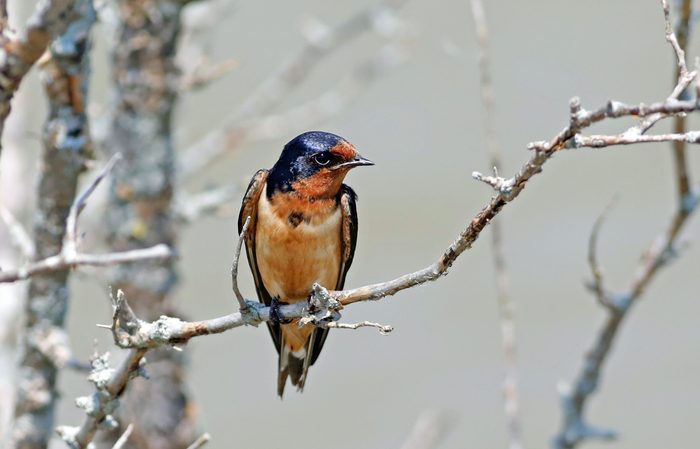
Birds That Eat Mosquitoes
Many common birds, such as northern cardinals and house sparrows, occasionally eat mosquitoes. But barn swallows, blackpoll warblers and eastern phoebes are mosquito-eating champions.
What birds eat oranges from fruit bird feeders?
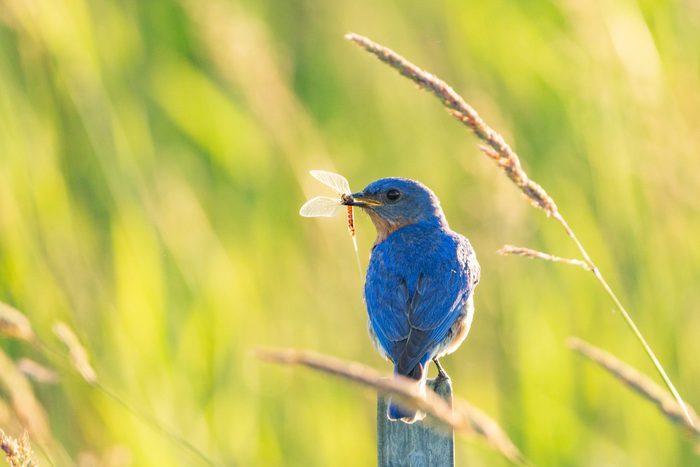
Insect Eating Birds: Bluebirds
Nesting boxes will attract bluebirds to your yard, but the bugs keep them there. With short, slender bills that are ideal for snatching insects, these dazzling thrushes pluck beetles from veggie gardens, catch mosquitoes and moths out of the air, and study the ground from a low perch for grasshoppers, crickets and beetles in tall grass. You can lure them to feeders with mealworms.
Eastern bluebirds and western bluebirds spot caterpillars and insects in grass more than 50 yards away. “Birds are primarily visual hunters,” says Desiree. “When insects come out, birds key in on them right away.”
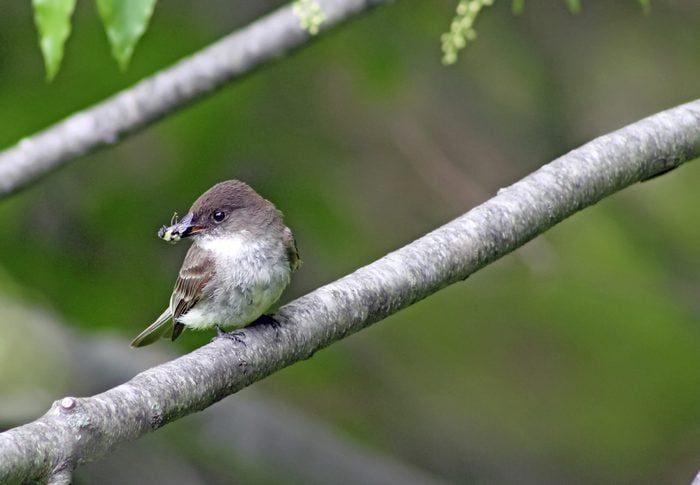
Phoebes
Unsurprisingly, these small brown birds, which are members of the flycatcher family, “eat mostly aerial insects,” Desiree says.
The brownish gray eastern phoebe and the light brown western species, Say’s phoebe, take short flights from a favorite perch, snatch a mosquito or fly midair, then, in a flash, return to their landing pad. “In the fall, when it’s warm, they’ll gobble down lots of yellow jackets and flies,” she says.
Find out what wrens eat and how to attract them.
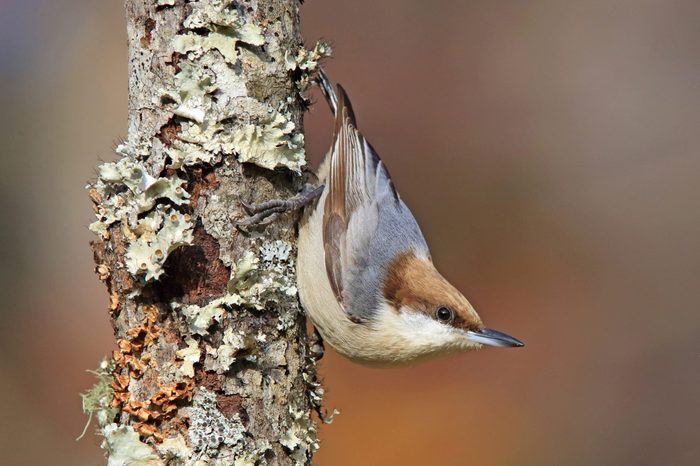
Nuthatches
These gray-blue birds travel headfirst down tree trunks, probing the bark with their long, thin bills for beetles, treehoppers, ants, caterpillars and scale insects that woodpeckers may have missed.
Pygmy and brown-headed nuthatches even craft tools from bark bits to pry up and expose insects. In summer, they’re drawn to leafy backyards to forage for critters.
Discover the 4 foods nuthatches love to eat.
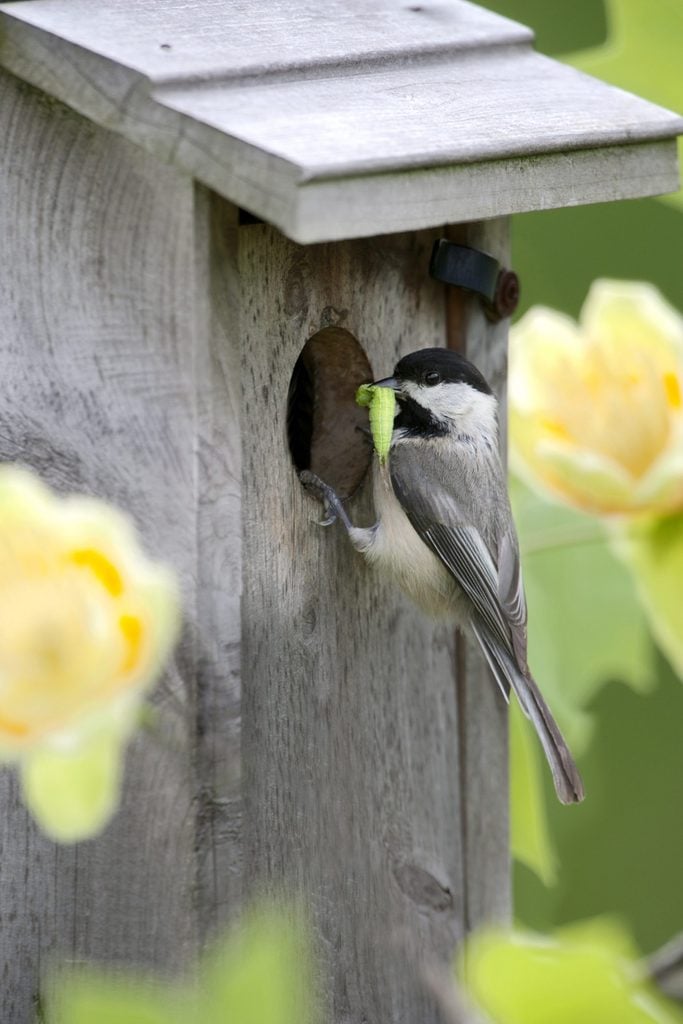
Chickadees
During spring and summer, insects make up the vast majority of black-capped chickadees’ diet.
“Even in winter, more than 50% of their diet is insects overwintering in dead leaves or in bark,” Desiree says.
These agile birds catch flies and moths in open air; glean aphids, scale insects and beetles from plants; and store the insects in crevices or under twigs.
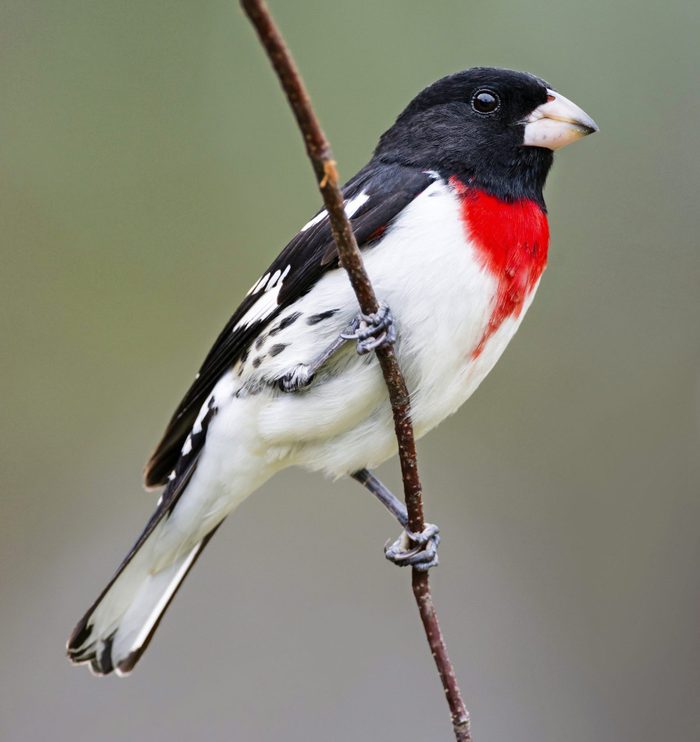
Grosbeaks
Thick, conical bills are ideal for cracking tough seeds as well as grasshoppers, crickets and other insects with tough exoskeletons. Rose-breasted grosbeaks and their western cousins, black-headed grosbeaks, fly out to capture bugs, such as wasps, bees and flies, and pick up beetles in foliage and branches.
Their diet is half insects during the breeding season, with seeds and fruit rounding off the rest of the menu.
Discover 10 foods you aren’t feeding birds yet.
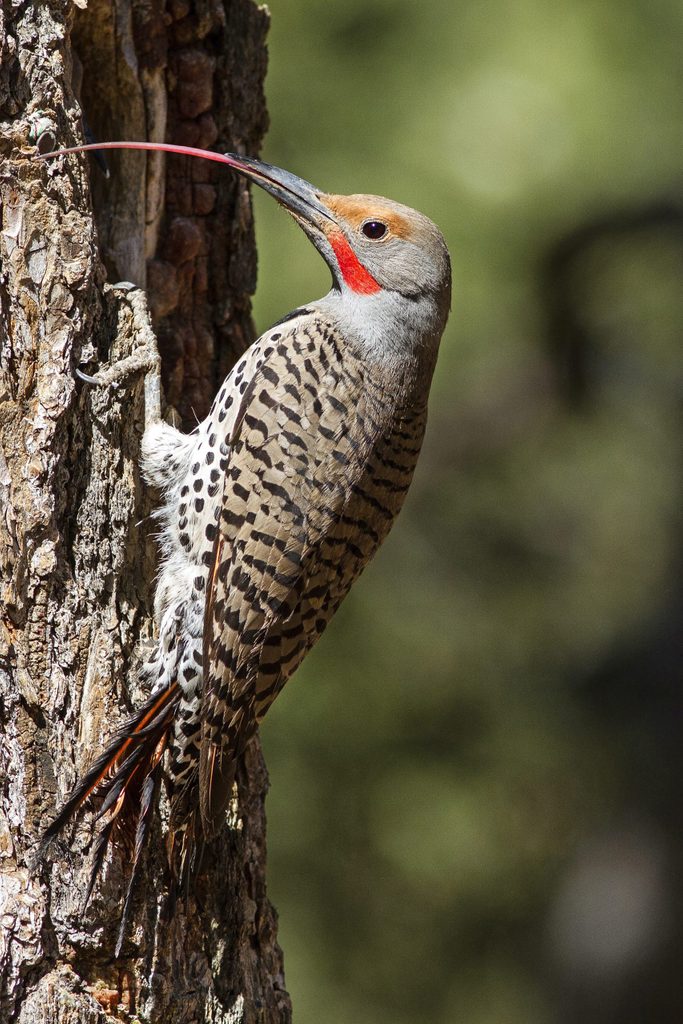
Northern Flickers
Northern flickers eat beetles and grasshoppers, but their favorite insects are ants—they can eat over a thousand in a single day. In addition to drilling into wood for bugs as other members of the woodpecker family do, flickers hammer at the soil for ants and their larvae.
Desiree says, “Most woodpeckers key in on bark beetles and wood-boring beetles and eat ants on occasion, but they don’t target them as the flicker does.”
Find out how woodpeckers use their tongues.
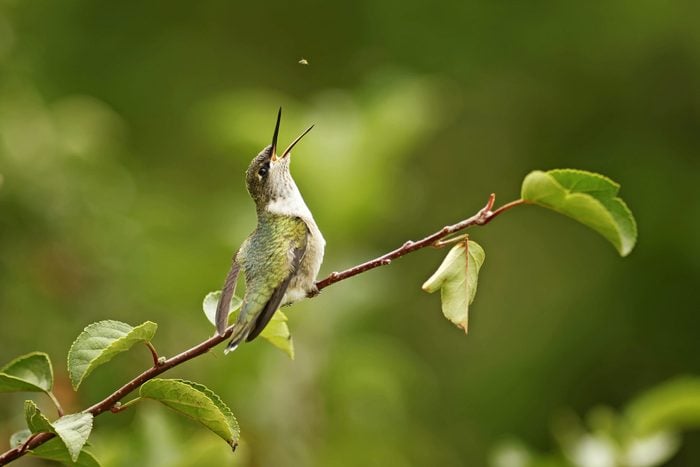
Hummingbirds
With an amazing ability to hover and quickly change direction, hummingbirds catch bugs such as gnats, mosquitoes, aphids, mites and flying ants while on the move—even from spider webs without becoming entangled themselves.
They swallow their prey whole, since their long, narrow bill prevents them from manipulating or tearing apart their food. Put out overripe bananas to attract fruit flies and draw in hummingbirds.
Learn how to make hummingbird sugar water.
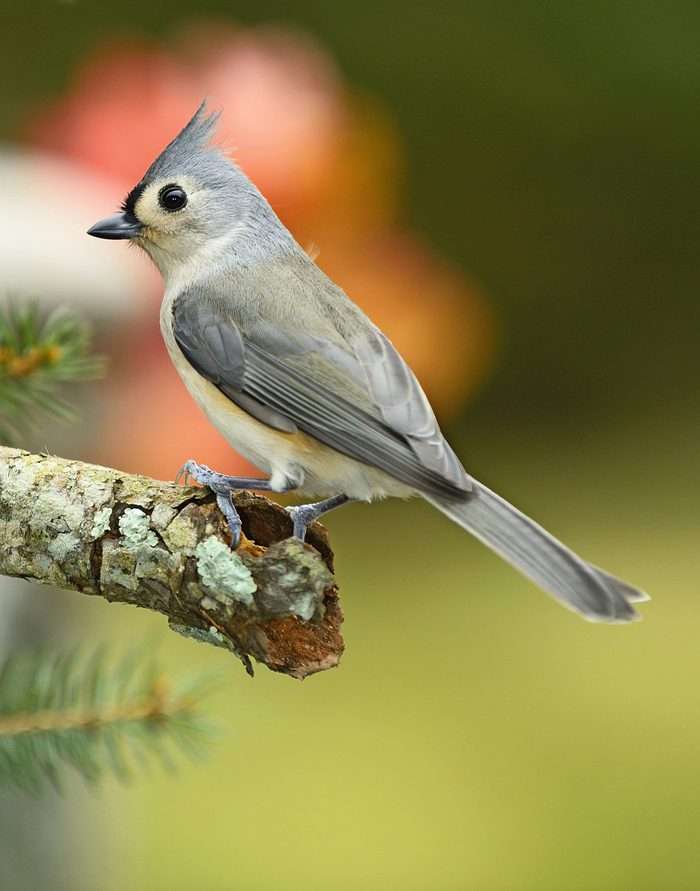
Tufted Titmice
They’re a familiar sight at seed feeders, but the gray-crested birds are also found upside-down or sideways on branches searching for caterpillars, ants, aphids and treehoppers, as well as wasps and stink bugs.
When tufted titmice aren’t hanging around, they’re often hopping on the ground searching for insects, which make up most of their diet in summer.
